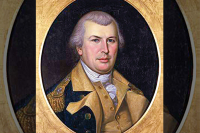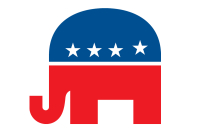Ghost Dance has a long history in Cherokee
(Note: This is part one of a two-part series regarding the Cherokee Ghost Dance. Part two will present Michelene Ethe Pesantubbee’s conclusions and perspectives on the movement.)
The belief in the coming of a messiah, or deliverer, who shall restore his people to a condition of primitive simplicity and happiness, is probably as universal as the human race, and takes on special emphasis among peoples that have been long subjected to alien domination. In some cases the idea seems to have originated from a myth, but in general it play safely be assumed that it springs from a natural human longing.
— Handbook of American Indians (1906)
Few know there was a Ghost Dance movement among the Cherokees almost 80 years before the infamous epoch in the American west that culminated in the Indian massacre at Wounded Knee.
Related Items
Flash back to January 1889 … a Paiute Indian named Wavoka (aka Jack Wilson), while suffering from high fever, had a vision during a total eclipse of the sun. This revelation became the genesis of the religious movement known as the Ghost Dance. At first the Indians believed the dance would simply unite them with friends and relatives in the ghost world. As the movement spread from tribe to tribe, however, the dancers began to imagine that the dance would make them invincible.
It consisted of slow shuffling movements following the course of the sun. It would be performed for four or five days and was accompanied by singing and chanting. It would, they imagined, cause the world to open up and swallow all other people, while the Indians and their friends would remain on this land, which would return to its beautiful and natural state. In addition, a ghost shirt made of buckskin cloth was said to render the wearer immune to bullets.
The unity and fervor that the Ghost Dance movement inspired, however, only fear and hysteria among white settlers and contributed to the events ending in the massacre at Wounded Knee in 1890. When the smoke cleared and the gunfire ceased, more than 300 Sioux, some wearing ghost shirts, lay dead.
Flash back another 78 years. The story of the much earlier Cherokee version of the Ghost Dance is related in an essay titled “The Cherokee Ghost Dance Movement of 1811-1813” by William G. McLoughlin in the book The Cherokee Ghost Dance: Essays on the Southeastern Indians, 1789-1861 (Mercer University Press, 1984). McLoughlin’s essay is presented as an overview of the extant 19th century accounts of the movement: as told by two Cherokees, Major Ridge and James Wafford; as published in the “Cherokee (Oklahoma) Advocate” in 1844; as recorded in the official mission diaries, 1811-1812, of the Moravians; and as observed by two U.S. Indian agents.
It was James Mooney, author of Myths of the Cherokees (1900), who first characterized the events as a Ghost Dance movement. Mooney, who lived among the Cherokees during the late 1880s, was also the author of The Ghost-Dance Religion and Wounded Knee, the definitive study of the western events.
McLoughlin summarizes the eastern Ghost Dance events as follows, with this writer’s additions in brackets:
“In the troubled years 1811-1812 . . . a prophet named Charlie [i.e., Tsali, but not the individual involved in the Removal events of 1838] appeared among the Cherokee and described a dream or vision in which the Great Spirit spoke to him. [Some accounts speak of there being several prophets rather than just one.] The Great Spirit said he was angry with the Cherokees because they had departed from the customs and religious practices of their ancestors and were adopting the ways of the white man. To regain the favor of the Great Spirit and overcome their troubles, the Cherokees were told by their prophet to give up everything they had acquired from the whites (clothing, cattle, plows, spinning wheels, featherbeds, fiddles, cats, books) and return to the old ways: they must dance their old dances…. The prophet also said that those who did not heed this message would be punished and some would die. [`Now I have told you the will of the Great Spirit, and you must pass on it,’ he is reported to have said in one account, `But if you don’t believe my words, look up into the sky.’] Though Charlie met some opposition, he found many ready to accept his revelations, and he went on to say that it had been revealed to him that on a specific date, three months hence, a terrific wind and hailstorm would take place that would annihilate al the white men, all the cattle, and all the works of the white man. [Some accounts predicted a three-day eclipse rather than a hailstorm.] The hailstones would be ‘as large as hominy blocks’ and would crush all those who did not retreat to a special, charmed spot high in the Great Smoky Mountains where they would be safe. [The charmed spot was perhaps Clingmans Dome, the highest peak in the Smokies, which the Cherokees know as Yonah.] After the storm, these true believers would be able to return to their towns where they would find all of the deer, elk, buffalo, and the other game that had disappeared. Then they would live again as their ancestors did in the golden era before the white man came.”
There was no storm or eclipse. The Ghost Dance fervor withered and died without a return to a golden era. In the end, as was inevitable, superior numbers won out. Four thousand Cherokees died during the 1838 forced removal. But for a while the Cherokees danced and returned to the old ways in an attempt to stem the tide.
George Ellison wrote the biographical introductions for the reissues of two Appalachian classics: Horace Kephart’s Our Southern Highlanders and James Mooney’s History, Myths, and Sacred Formulas of the Cherokees. In June 2005, a selection of his Back Then columns was published by The History Press in Charleston as Mountain Passages: Natural and Cultural History of Western North Carolina and the Great Smoky Mountains. Readers can contact him at P.O. Box 1262, Bryson City, N.C., 28713, or at This email address is being protected from spambots. You need JavaScript enabled to view it..









